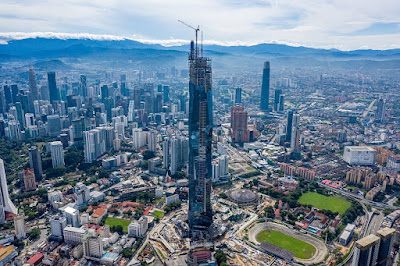Deserts are
usually considered to be hot, arid areas with vast stretches of sand and dry
earth. While this is certainly the case for some regions, all do not fit this
description. Precipitation, not sand and heat, determine what areas are
deserts. Deserts are found in all continents of the world but the nature and
size of these deserts vary greatly. Since deserts are associated with difficult
living conditions, they are often some of the world's most sparsely populated
regions. In this article, we explore the world's largest deserts.
https://www.worldatlas.com/articles/10-largest-deserts-in-the-world.html
1.
Antarctic - 5.5 Million Square Miles
The Antarctic is classified as a polar desert. Measuring 5.5
million square miles (14.2 million sq. km), it is the largest desert in the
world. Unlike most global deserts, the Antarctic covers the entire continent.
In fact, an astonishing 98 percent is permanently covered by a sheet of ice. It
is considered a desert because it rains on average only 10 mm every year. Some
experts even believe that certain parts located away from the coast have not
had rain in the past 14 million years.
2.
Arctic - 5.4 Million Square Miles
The Arctic tundra is the only other polar desert in the world. It
spans numerous northern countries, including Canada, Greenland, Russia, and
Asia. It is second only to the Antarctic, measuring a whopping 5.4 million
square miles (13.9 million sq. km). It is also considered a desert due to the
lack of precipitation; the frigid air is too cold to hold moisture. While it
gets more rain than the Antarctic, it still only receives approximately six to
ten inches a year.
3.
Sahara - 3.5 Million Square Miles
The Sahara is the largest subtropical desert in the world,
clocking in at 3.5 million square miles (9 million sq. km). Spanning eleven
countries, it covers nearly an entire third of Africa. It is most known for its
scorching hot climate and mountainous sand dunes that reach as high as 183
meters. Despite these harsh conditions, it is home to numerous desert animals,
including camels, lizards, and scorpions. Water sources are rare, but the
Sahara does have two rivers and twenty seasonal lakes
4.
Arabian - 1.0 Million Square Miles
The Arabian is the world’s second-largest subtropical desert.
Spanning most of the Arabian Peninsula in Asia, it measures approximately 1.0
million square miles (2.6 million sq. km). It is a barren and sandy landscape but is surprisingly rich in natural resources, such as oil and sulfur. Summer
temperatures can go as high as fifty degrees Celsius during the day, but drop
drastically at night. Locust and dung beetles are native to this bleak region.
5.
Gobi - 0.5 Million Square Miles
The Gobi Desert is the fifth-largest desert in the world. Spanning
parts of Mongolia and China, it measures 0.5 million square miles (1.3 million
sq. km). Its terrain is mostly rocks and hard-packed earth, which made it a
valuable trade route throughout history. Like all traditional semiarid deserts,
the Gobi experiences extremely high temperatures during the summer and frigid
temperatures during the winter. It is also considered a rain shadow desert
because the Himalayas block out all rainy weather.
6.
Patagonian - 0.26 Million Square Miles
Located in Argentina, the Patagonian Desert—also known as the
Patagonian Steppe—is the sixth-largest desert in the world. It measures roughly
0.26 million square miles (0.67 million sq. km). To the west lie the Andes, the
world’s longest mountain range, and to the east, the Atlantic Ocean. As a
semiarid desert, it shares similar characteristics with the Gobi desert. Frost
covers the ground during the winter season, but snow is unusual due to the
dryness of the region.
7.
Great Victoria - 0.25 Million Square Miles
The Great Victoria is a subtropical desert
located in Australia. It is the seventh-largest desert in the world, clocking
in at 0.25 million square miles (0.65 million sq. km). It is a harsh
environment of sand, rocks, hard packed-earth, and grassland. During the summer,
temperatures rise up to forty degrees Celsius. As with most subtropical
deserts, it is cooler during the winter, but still fairly hot. The Great
Victoria receives an average of eight to ten inches of rain every year.
8.
Kalahari - 0.22 Million Square Miles
The Kalahari is a subtropical desert located in southern Africa.
Spanning parts of Namibia, Botswana, and South Africa, it is the eighth largest
desert in the world at 0.22 million square miles (0.56 million sq. km).
Interestingly, it is classified as a semi-desert as it receives four to eight
inches of rain per year, but twenty during special wet years—ten more than what
is generally accepted for a region to be considered a desert. Wild animals such
as meerkat, hyena, kudu, and wildebeest call this region home.
9.
Great Basin - 0.19 Million Square Miles
At 0.19 million square miles (0.49 million sq. km), the Great
Basin is one of the “big four” deserts in North America. It spans multiple
states, covering most of Nevada and Utah. Located directly north of the Mojave
Desert, it is a dry expanse of clay, silt, and sand; however, as a semiarid
desert, it receives a fair amount of snow during the winter months. It is said
that at 4,950 years old, a local Bristlecone Pine is the world’s oldest living
thing
10.
Syrian - 0.19 Million Square Miles
The
Syrian—also known as the Syrian or Jordanian Steppe—is the tenth-largest desert
in the world, measuring approximately 0.19 million square miles (0.49 million
sq. km). It spans multiple Middle Eastern countries, including Syria, Jordan,
Saudi Arabia, and Iraq. Despite its name, it covers more of Jordan than Syria.
As a subtropical desert, it is a barren landscape of rock and gravel. What
wildlife is able to thrive in such an environment is currently under threat from
drought, over-grazing, and hunting



























